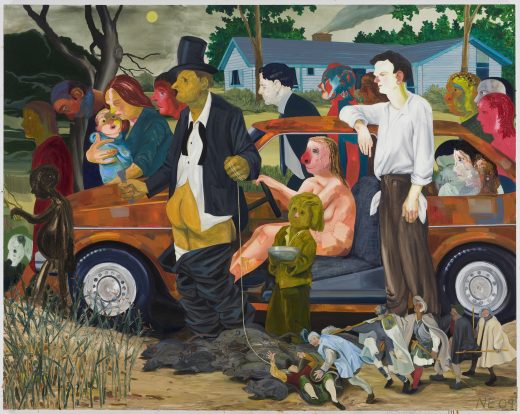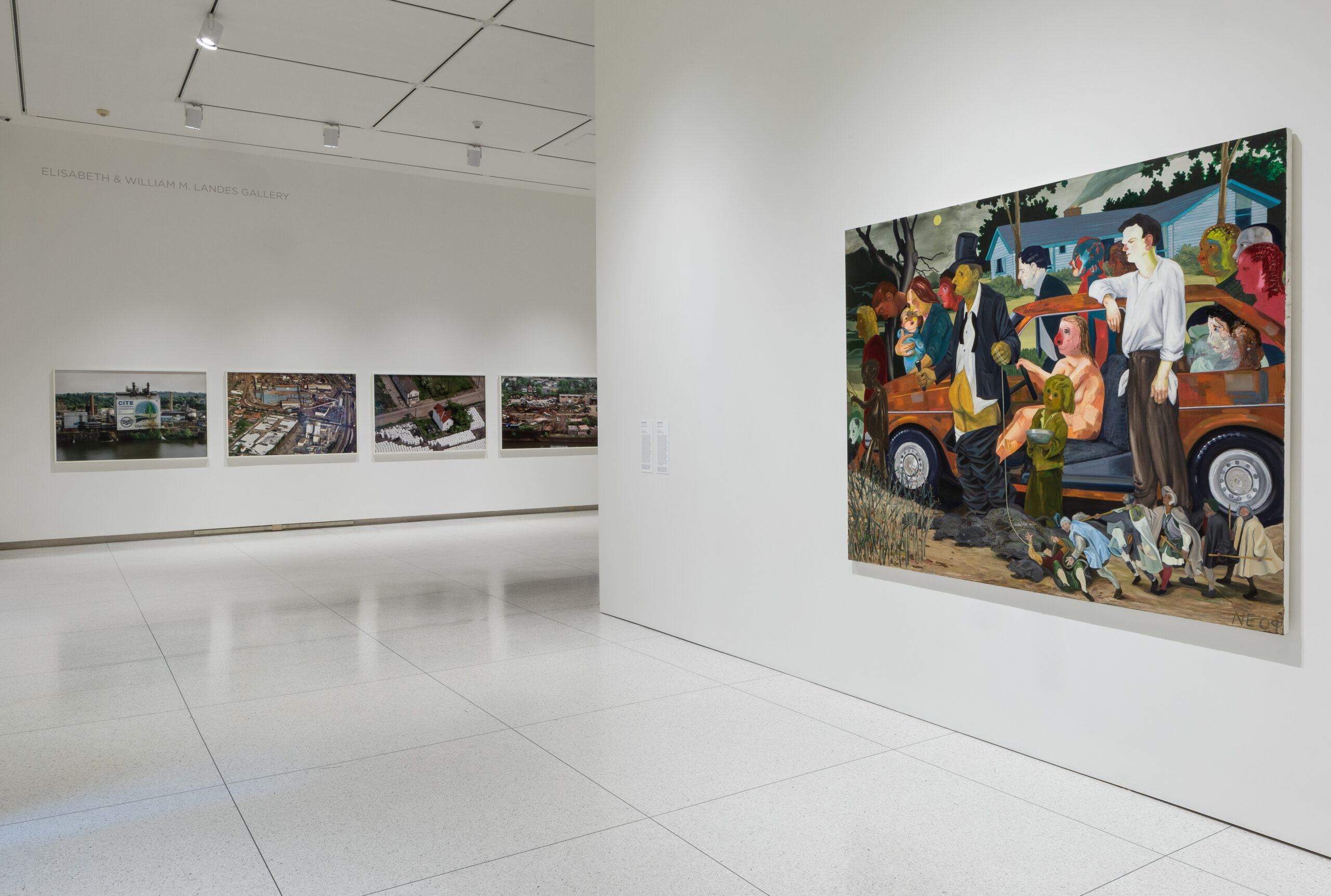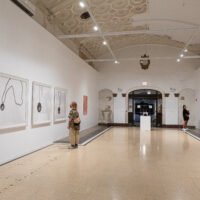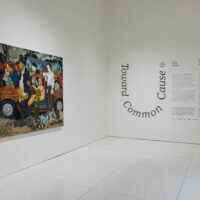Nicole Eisenman

When the MacArthur Foundation awarded Nicole Eisenman the Visual Artist Fellowship in 2015, it cited her for “restoring to the representation of the human form a cultural significance that had waned during the ascendancy of abstraction in the 20th century.” That’s a very big job, one that she approaches with grit, humor, skepticism, painterly facility, and a deep knowledge of art history. Her paintings, drawings, prints, and, more recently, monumental sculptures manage to balance her very specific individuality with universal concerns like loneliness, gluttony, power, sexual desire, and bloodlust.
Her friend and fellow painter Amy Sillman memorably described Eisenman’s friends in New York in the late 1980s and ’90s as “roaming the streets of Alphabet City alongside a veritable herd of young rockers, queers, politicos, performers and art schoolers who swelled and swarmed into the East Village in search of fun and danger.” The herd of rockers appears in many of her works, slumped together in untidy piles at the end of a party, lounging by the pool, having sex, enjoying an evening at the bar. Many of her artistic subjects, like her friends, are gender fluid and/or lesbians engaged in everything from mundane to carnal activities, surrounded by piles of art monographs (Vuillard, Bruegel, Picasso, etc.).
Some of Eisenman’s other works foreground, as she noted above, the desires and anxieties of our culture at large, and especially of our nation. Allegories have long been part of her practice, as they are in her painting Daily Affirmation from 2018, in which we see a cartoonish bald eagle staring in the bathroom mirror, brushing his teeth, and giving himself a pep talk (“You’re good enough, you’re smart enough . . .”). In the eight-foot-wide painting Triumph of Poverty from 2009, a bedraggled crew of people trudge across the surface of the painting, accompanied by a man in a top hat and tuxedo who is literally ass-backward. A second group of people, lifted directly from Pieter Bruegel’s 1568 painting The Blind Leading the Blind, parallels their progress in miniature along the bottom edge.
Eisenman does much more than name-check canonical Western painters: she confidently, gleefully marauds through the history of art for techniques, colors, forms, and ways for paint to be deployed and render sensations. She inserts herself in the old boys’ club of masterful painting and proceeds to break the furniture.


